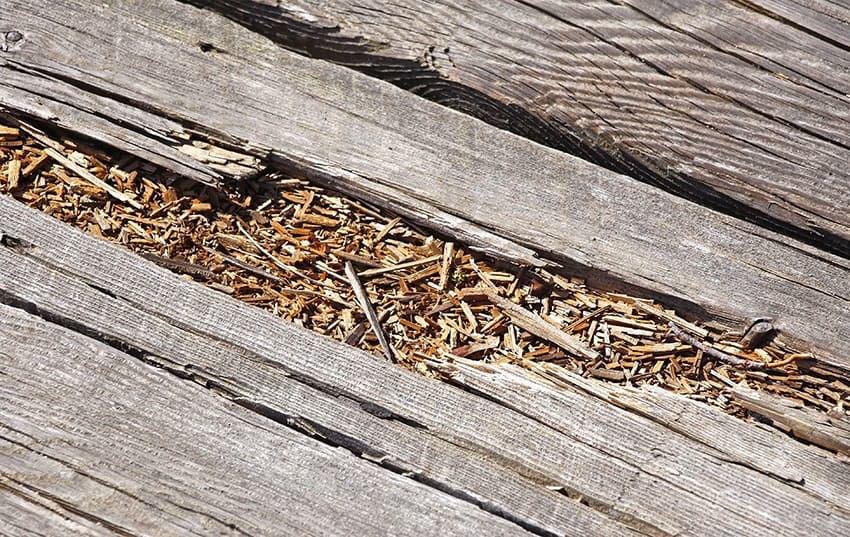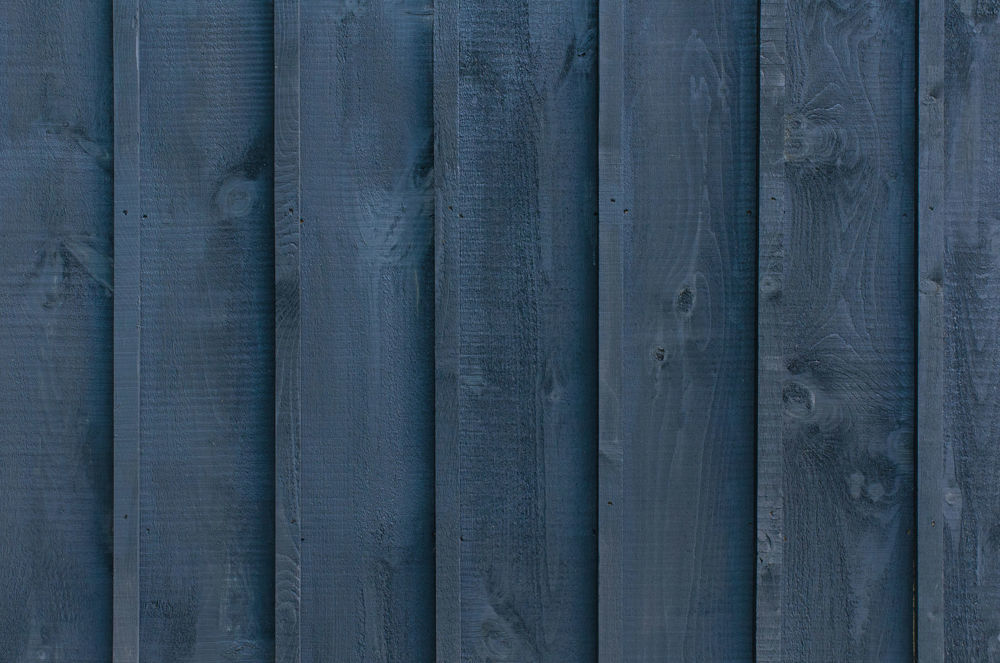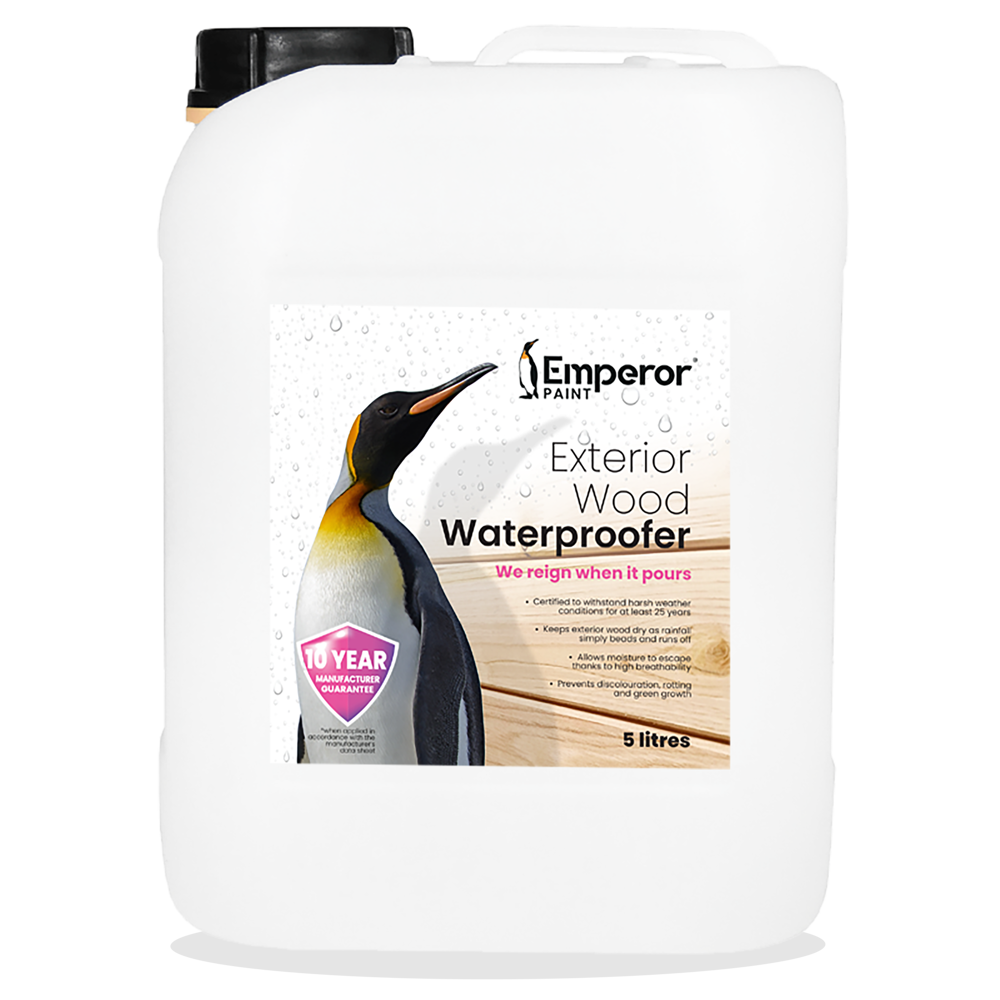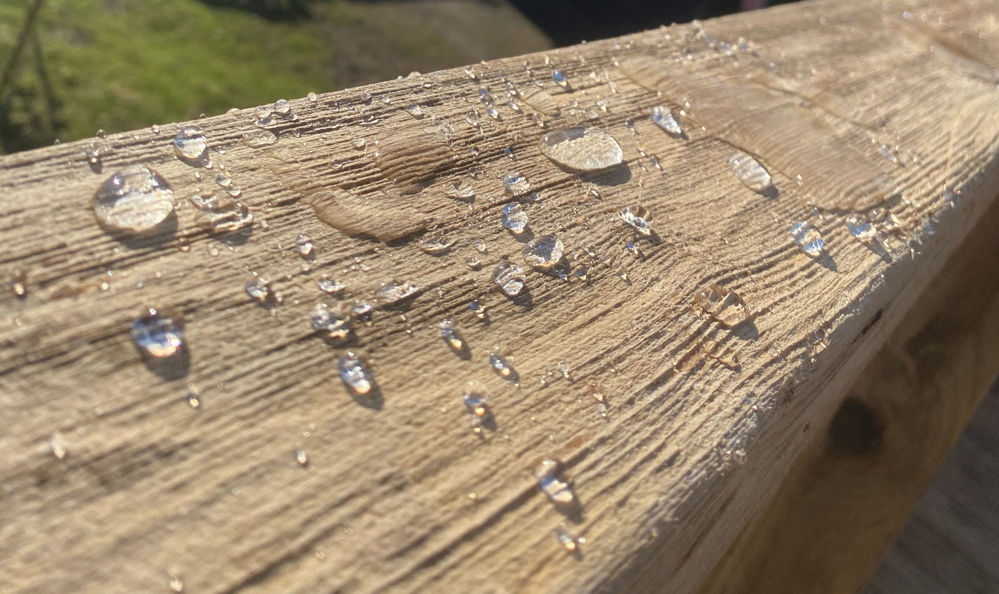
Rotting wood on fencing, decking, furniture and a wide range of other timber surfaces is a common sight, especially with the conditions here in the UK. But what causes this and how do you prevent wood from rotting? Our experts have put together this handy guide on the best way to prevent wood from rotting so you can ensure your timber surfaces stay protected long-term from damage.
What Is Rotting And What Causes It?
Rotting is something we are all familiar with, however we aren't all familiar exactly what causes it. Rotting, in particular wet rot, is caused by a fungus that feeds off wood until it begins to weaken and breakdown. This fungus thrives in highly saturated conditions, meaning it is primarily a result of wood being exposed to wet conditions for extended periods of time. Once the rotting sets in, it will only worsen until the source of the moisture is prevented. The resulting wood after the rot has attacked the material can often need substantial repair work, which is why the best form of treatment for rotting is to prevent the water ingress in the first instance.
You may be wondering, is wood not waterproof to begin with? The fact is, almost all mineral surfaces are porous, meaning they absorb moisture. The more porous the material, the more moisture it can absorb and hold in its pores. Wood is a highly porous material, meaning if left bare and untreated, it will absorb any rainfall and become extremely damp. This moisture not only leads to rotting, but also causes the wood the shrink, crack and leads to organic growth such as algae, moss and lichens that all cause the wood to discolour.
How Do You Prevent Wood Rotting?
Whether you have wood that is currently suffering from rotting or you are looking to protect new wood, if you want to reduce the risk of any future rotting it is crucial to applying a waterproofing treatment to the timber in order to reduce water absorption. By keeping the wood dry, you prevent the conditions required for the fungus that leads to rotting to develop.
There are a wide variety of wood treatments available, which can make finding the right one for you rather difficult. These treatments include wood paints, wood stains, wood oils, wood waterproofer & wood sealers, which all vary in a number of ways.
- Wood paint - an opaque coloured finish that completely covers the grain of the wood with a uniform finish. Available in matt, satin & gloss finishes.
- Wood stain - a coloured, semi-transparent finish that adds added pigment to the wood while maintaining the visibility of the grain.
- Wood oil - a wood oil enhances the natural look of the wood and are often made of natural ingredients, although they can be less durable than other products.
- Wood sealer - a clear, invisible sealer that creates a water repellent film on the surface of wood.
- Wood waterproofer - a clear, invisible water repellent treatment that protects bare, natural wood from weathering by reducing water absorption. These chemically bond to exterior wood to provide the wood with water repellent properties rather than forming a water repellent surface on the timber.
- Wood wax - often made of a natural beeswax that nourishes wood in the same way a moisturiser would, although generally for interior use due to their tendency to need regular maintenance and re-application.
The best wood treatment for you depends on the look you want to achieve and the level of protection you require. No matter what type of wood treatment you opt for, it is crucial that you bear in mind the its ability to prevent water absorption and its breathability. Firstly, the ability for a wood treatment to prevent water absorbing into the timber is crucial, especially if you want to reduce the risk of rotting. As we have discussed, wood is highly porous and if left untreated will absorb and hold large amounts of moisture that leads to wet rot. By applying a wood product that prevents this absorption, you keep the wood dry and prevent the conditions needed for the rot to take hold. Not all wood treatments are waterproof, as to be fully waterproof a product must be water repellent. If a product is not water repellent it will uptake some level of moisture over time.
This waterproofing is only effective if you use a highly breathable wood product that is not going to negatively impact the breathability of the timber. Breathability refers to the amount of water vapour that can pass through a material. If a material is not breathable, moisture will become trapped inside the substrate. In the case of wood, if a treatment with low breathability is applied, this traps moisture inside the timber which serves to worsen any problems associated with rot. Due to this, if you want to keep exterior wood dry and protected from rotting you must use a paint that is not only waterproof but also highly breathable.
So, what wood treatment is best for you? If you are looking to change the appearance of the wood and give it a new colour, a wood paint or wood stain is your best option. These both offer coloured finishes, making them ideal if you are looking to completely transform the look of your exterior wooden surfaces. Bear in mind that these will all have varying levels of protection as they are rarely water repellent, so ensure you opt for a good-quality product that will stand the test of time. In any case, due to the fact that these products for a film on the surface of the wood, they run the risk of becoming weathered over-time leading to blistering, peeling or flaking.

If you are looking for an invisible protective treatment for exterior wood that won't change the appearance of the wood but will help protect it from rotting, a wood oil or wood waterproofer is your best option. The difference between these wood treatments is that a wood oil nourishes the wood and replaces natural oils, while a wood waterproofer chemically bonds with the pores of the wood to provide the material with water repellent properties. Other differences include wood oils being oil-based while wood waterproofers are water-based, plus wood oils can require 2-3 coats while waterproofers are one-coat systems. Having said this, they are both clear wood treatments that offer water repellent properties and are both ideal if you want to protect natural wood from rotting while maintaining its natural beauty.

In order to offer the best possible protection from rotting, organic growth & discolouration that are all caused by exterior wood becoming wet, we developed Emperor Exterior Wood Waterproofer, which contains highly advanced super hydrophobic technology. This lines the pores of wood instead of sealing them, meaning water is too large to fit through these pores but water vapour can freely pass through. This provides the wood with ultra water-repellent properties while maintaining high breathability, keeping exterior wood completely dry. By keeping wood dry, the product helps to prevent rotting, discolouration, organic growth and UV degradation, helping to not only keep natural wood look beautiful but also extending its lifespan and protecting it from weathering.
Due to its ability to chemically bond to wood, there is no film creating on the surface of the timber. This means that there is no film to become weathered and to fail, meaning it has maximum durability in any weather conditions. Independent testing subjected the product to 25 years accelerated weathering, with the results finding that there was no change of performance or appearance in 25 years of weathering.

A Step-By-Step Guide To Preventing Rotting
YOU WILL NEED:
- Emperor Exterior Wood Waterproofer
- Paint brush, roller or pump-sprayer
- Dust sheet
- 180 grit sandpaper (may be required)
- Masking tape
- Exterior wood filler & filling knife (may be required)
2. PREPARATION
As with any decorating project, the most important part is the preparation. If you do not prepare the surface properly before treating it, you will run the risk of not only achieving a poor finish but also the treatment not having the desired performance.
Due to wood being an organic material, the likelihood of any dirt, debris or organic growth being present is high. This must be removed to ensure the wood is in the ideal condition. The most effective way to clean outdoor surfaces properly is to use a power-washer which can help to remove not only dirt but also any fungal growth. If you are treating wood that does not suffer from large amounts of dirt, hot soapy water and a soft brush is often enough to remove dirt from the surface of the wood. You may also decide to sand the wood down using a 180-grit sandpaper to remove tough, ingrained dirt within the grain.
Once the wood is clean, it is time to apply a fungicidal cleaner. This is an important step for any wood that isn't new, as organic growth such as mildew, lichens and algae all thrive on weathered wood that has been exposed to the elements. Applying a fungicidal cleaner kills this growth, so it can no longer continue to develop once the treatment is applied. Apply Emperor Exterior Cleaner to the wood using a brush, roller or pump-sprayer and leave it to dry for 2 hours.
If your exterior timber has suffered from wet rot, it is likely that repairs will be required in order to restore the wood. Start by removing any crumbling and defective wood. You’ll know you need to remove the timber if it easily comes away from the surface.
You can then make repairs to the wood using an exterior wood filler. As the waterproofer is invisible, you want to ensure that you use a filler that matches the rest of the wood, as this will stand-out if there is a colour variance. After repairs are made it is recommended to put down a dust sheet on the floor and to mask any edges to prevent overspray getting on other surfaces.
2. APPLYING THE TREATMENT
Before you apply anything to the wood, you must ensure that the timber is completely dry. If the wood is saturated with moisture, this can prevent the treatment from absorbing into the material.
The treatment can be applied using a hand-pump sprayer, brush or roller so it is completely up to you how you apply it. If you have a small area, a brush or 4" roller may be the easiest application method, or on larger areas a 9" roller or pump-sprayer will allow you to cover a larger area efficiently. Apply the treatment to the bare wood at a coverage of 5m2 per litre. You only need to apply one-coat so once you have applied the treatment you can simply leave this to dry for 1 hour at 20°C. The full beading effect of the wood treatment will be visible once it has cured, which may take a number of days, so be patient. In this time, the wood will still be fully waterproof and protected after it is touch dry.

Frequently Asked Questions
Q. IS IT SUITABLE FOR NEW OR WEATHERED WOOD?
The easiest way to treat rotting wood is to prevent it in the first place. This means that waterproofing new timber at the earliest possible opportunity is the ideal time to protect against rotting. If wood has already become weathered, as long as repairs are made you can then extend the lifespan of the wood by applying a waterproof treatment to keep it dry. No matter the age of the wood, preventing water absorption is the best way to protect it and keep it looking its best long-term.
Q. CAN I APPLY IT TO PREVIOUSLY TREATED WOOD?
Emperor Exterior Wood Waterproofer must be able to absorb into the wood. Any previous coating can prevent this meaning it must be applied to bare, untreated wood.
Q. WHAT GUARANTEE OF PERFORMANCE IS THERE?
The product has been independently tested by a UKAS accredited laboratory in a 25 year weathering test. After 25 years equivalent weathering, there was no signs of change in appearance or performance of the wood, which means it was fully protected for a 25 year period. Due to this, we offer a 10 year manufacturer guarantee which ensures the performance of the product in any conditions, giving you peace of mind.
Q. WHAT IS THE DIFFERENCE BETWEEN WATER-BASED AND OIL-BASED?
Terms you will see very often when researching wood products is water-based and oil-based (solvent-based). This refers to the composition of the product, with water-based products using a water-borne solvent while oil-based products have a significantly higher level of organic solvents. The difference between water-based when compared to oil-based products is that they dry quicker, do not come with an unpleasant smell and contain lower levels of Volatile Organic Compounds (VOC's).
We hope we have answered any questions you may have had regarding protective wood treatments. If you have any other questions, feel free to get in touch with our team of experts who are on hand to assist you. Contact them today by emailing info@emperorpaint.co.uk or calling them on 0161 509 9009. Alternatively, shop Emperor Exterior Wood Waterproofer and get FREE delivery on all orders.

